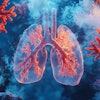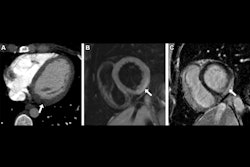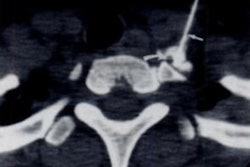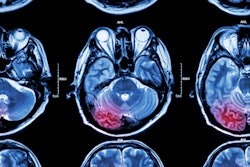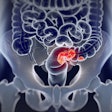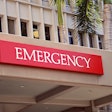In nontraumatic emergency department patients, ultralow-dose chest CT offers more than twice the detection rate for main diagnoses compared to chest x-ray, researchers have found.
The study results suggest that CT could be a useful way to assess these patients, according to a group led by Christian Wassipaul, MD, of the Medical University of Vienna in Austria. The team's findings were published October 17 in eClinicalMedicine.
Chest x-ray is a useful primary diagnostic tool for a variety of indications, with benefits such as widespread availability, short reporting time, and low radiation exposure (mean effective dose for a chest x-ray in two views is 0.1 mSv). But its sensitivity and specificity are only moderate, the team noted. Chest CT can overcome these obstacles, but it does impart more radiation, is more expensive, and requires more reporting time. Yet improvements in CT technology could be changing the game.
"In current clinical routine, non-contrast-enhanced chest CTs are performed at two major radiation dose levels, standard-dose CT … (6 mSv) and low-dose CT … (1.2 mSv to 2 mSv)," the investigators wrote. "However, the latest advances in CT technology, including new detectors and new reconstruction algorithms, have considerably lowered radiation exposure requirements for chest CTs to nearly the radiation dose of a chest x-ray. Thus, ultralow dose CT … (0.22 mSv) of the chest is emerging as a diagnostic alternative to conventional chest x-ray in low-prevalence patient groups, and several studies have shown the feasibility of chest CTs for specific indications at a radiation dose of up to three chest x-ray examinations."
So if chest CT radiation dose can be lowered, what benefits might it offer over chest x-ray to emergency room patients with nontraumatic conditions? Wassipaul and colleagues explored the question via a study that included 294 patients who presented to the emergency department between May and November 2019. All participants underwent both chest x-ray and ultralow-dose CT; the study was divided into two equal arms by these modalities.
The authors reported that ultralow dose chest CT had more than twice the detection rate of main diagnoses compared with chest x-ray.
The study results suggest that ultralow-dose CT could be used as a primary chest imaging modality for nontraumatic emergency room patients, but more research is needed – especially since CT costs more than chest x-ray and reports take longer, according to the authors.
"[Our findings support] the future use of ultralow-dose CT as one of the primary chest-imaging modalities in low-prevalence non-traumatic emergency department patients," they wrote. "Due to higher expected costs and resource requirements, further economic analyses will be necessary to determine the optimal spectrum of indications, rationale, and economic potential of a broader substitution of ultralow-dose CT for chest x-ray as a primary imaging modality of the chest."
The complete study can be found here.


